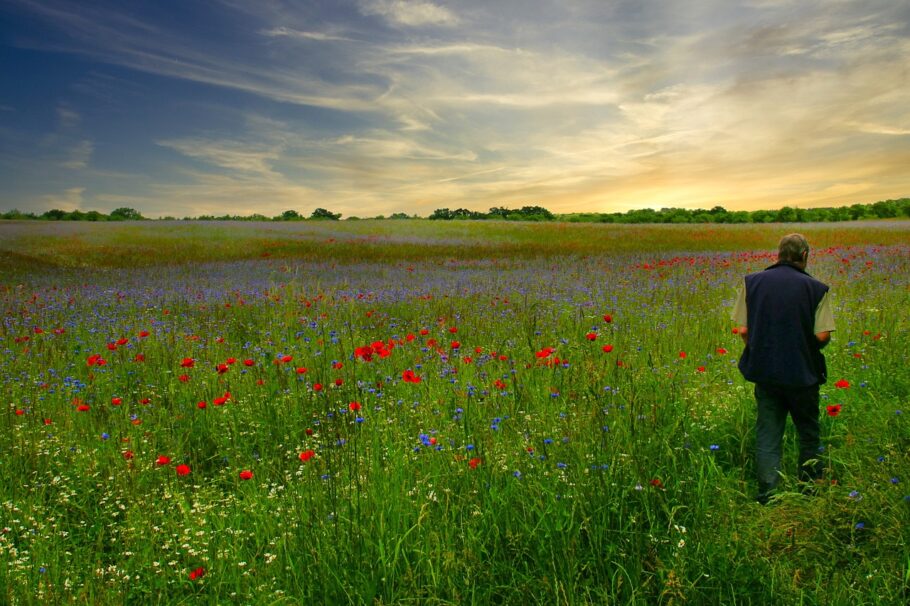Blue stars, also known as Amsonia, are a stunning wildflower that can attract butterflies to your garden. These plants have delicate and beautiful blooms that typically appear in May or June, making them a favorite among pollinators like bees and butterflies.
One of the best features of Blue stars is that they are long-lived and low-maintenance, making them a great option for gardeners looking for an easy plant that provides beauty and interest for years to come. These plants typically grow up to around three feet tall with multiple long and narrow stems. The leaves are usually green and delicate, while the star-shaped flowers shine with a stunning blue color. You can also leave the seed pods on the plant to provide additional visual interest.
To grow Blue stars, make sure you plant them in well-drained soil and full sun or partial shade. These plants can tolerate some drought but need regular watering in hot conditions to ensure their best performance. You can also propagate Blue stars through division of existing plants or by sowing their seeds in the fall or early spring.
Blue stars can make an excellent addition to any garden bed, mixed border, or naturalistic planting. They pair well with other native wildflowers, such as coneflowers and bee balm, and also look beautiful when planted in large groupings. So, if you want to add some stunning blue color to your garden and attract some butterflies at the same time, consider planting Blue stars.
The Features of Blue Star Plants
Blue star plants have several distinctive features that make them a popular choice for gardeners. Firstly, they have multiple long, thin stems that can grow up to three feet tall, making them stand out in any landscape. The leaves of blue star plants are typically green, narrow, and soft to the touch, adding an elegant touch to any garden bed or border. The stunning star-shaped flowers are the highlight of blue star plants, and their bright blue color can attract butterflies and bees, making them a great addition to any garden that is aimed at attracting wildlife.
In addition to their beautiful blooms, blue star plants have another interesting feature – their seeds. The seeds of blue stars are found in clusters within pods that form after the flowering season has ended. These seed pods can add extra visual interest to the plant and can also be collected for propagation purposes.
Overall, blue star plants are a great choice for gardeners looking for a low-maintenance, visually stunning option. Their unique features make them truly stand out in any garden, and they pair well with other native wildflowers to create a diverse and vibrant landscape.
How To Grow Blue Stars
Blue stars are a great addition to any garden and are relatively easy to grow. To ensure that your blue stars thrive, you should plant them in a location that receives full sun or partial shade and has well-drained soil. Blue stars can tolerate some drought, but they will perform best with regular watering in hot conditions.
If you want to grow blue stars from seed, it is recommended to sow the seeds in the fall or early spring. Alternatively, you can propagate blue stars by dividing existing plants. This can be done in the spring, just as growth resumes. Simply dig up an established clump and separate it into smaller sections, each with a few roots and stems.
Once you have planted your blue stars, be sure to water them regularly, especially during periods of drought. You may also want to consider adding a layer of mulch around the base of the plants to help retain moisture and suppress weeds.
With a little care and attention, your blue stars will thrive and provide stunning blue blooms for years to come.
Using Blue Stars in Your Garden
Blue stars, or Amsonia, are versatile plants that can be used in a variety of garden settings. Whether you’re looking to add interest to a garden bed, create a mixed border, or create a naturalistic planting, Blue stars can be an excellent choice. These plants pair well with other native wildflowers like coneflowers and bee balm and can create a stunning display when planted in large groupings.
One of the great benefits of Blue stars is that they are long-lived and low-maintenance. This makes them an excellent option for gardeners who want to create a beautiful and sustainable garden that will provide beauty and interest for years to come. Because Blue stars are well-adapted to a variety of soil types and growing conditions, they can thrive in many different settings.
If you’re looking to incorporate Blue stars into your garden, there are a few things to keep in mind. First, be sure to choose a planting location that receives full sun or partial shade and has well-drained soil. Blue stars can tolerate some drought, but they need regular watering in hot conditions to ensure their best performance. Additionally, to propagate Blue stars from seed, it is recommended to sow the seeds in the fall or early spring. Alternatively, division of existing plants is also an effective propagation method.




